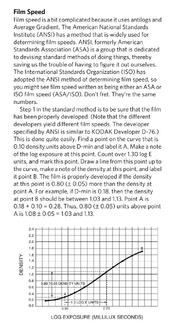I rarely use D-76, but when I do I use the Grant Haist "H" variant. I don't have hydroquinone in my darkroom and The Darkroom Cookbook says that D-76H "works indistinguishably from Kodak D-76."
This has worked fine up until now, but I'm getting into sensitometry and want to perform an ANSI Film Speed test. Do I need to buy hydroquinone or commercial D-76/ID-11? Or is D-76H sufficient for the test?
Metol is a soft-working developing agent that initiates development very quickly, especially in the shadow areas (the toe of the characteristic curve)
Hydroquinone is a high-contrast developing agent that is slow to start but builds density rapidly once it begins, especially in the highlights.
When used together, they don't just add their effects; they multiply them. The hydroquinone "regenerates" the oxidized Metol, allowing it to continue developing. This superadditive action makes the developer more energetic and fundamentally changes the shape of the characteristic curve compared to what either agent would produce alone. D-76H, lacking hydroquinone, is essentially a simple Metol developer (like D-23) and does not benefit from this superadditive effect.
---------
I would use the developer you like, develop to a ΔD of .80 and define this as box speed. Based on this, the relative film speeds can be calculated.
What you are trying to calculate is your personal Exposure index (EI). You are not trying to measure film speed based on ISO criteria. ISO criteria are used by manufacturers to define speed under exact lab conditions.












